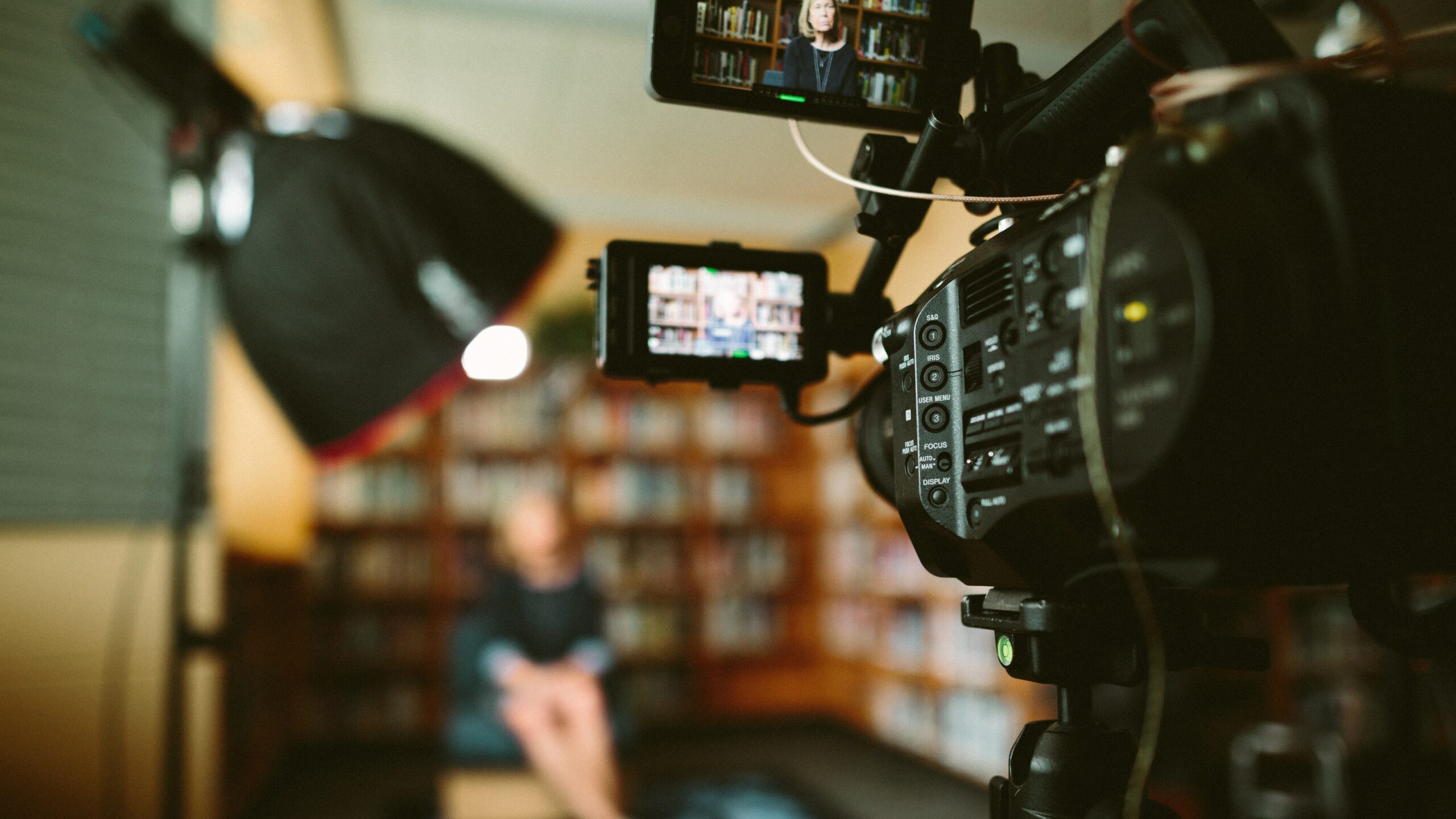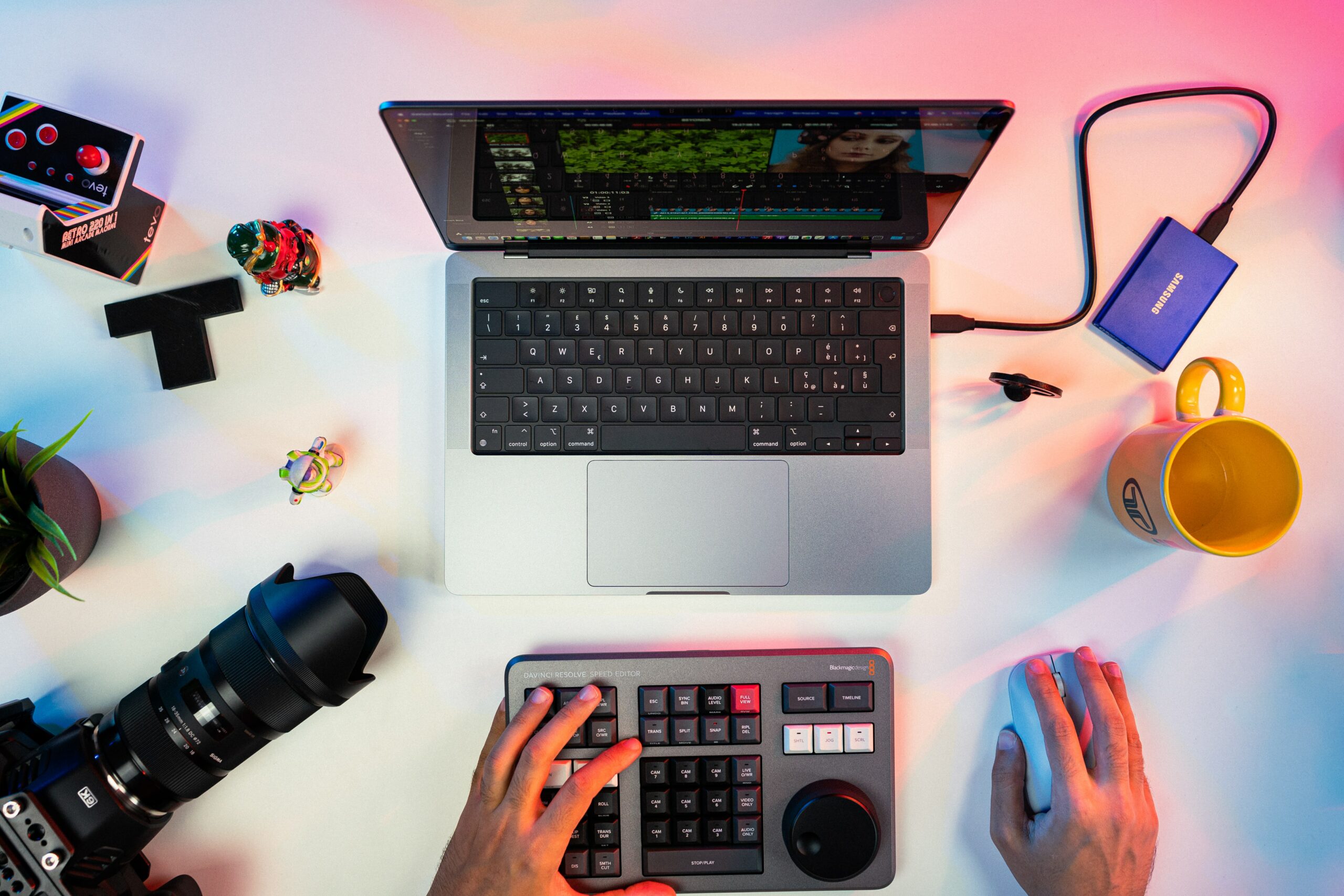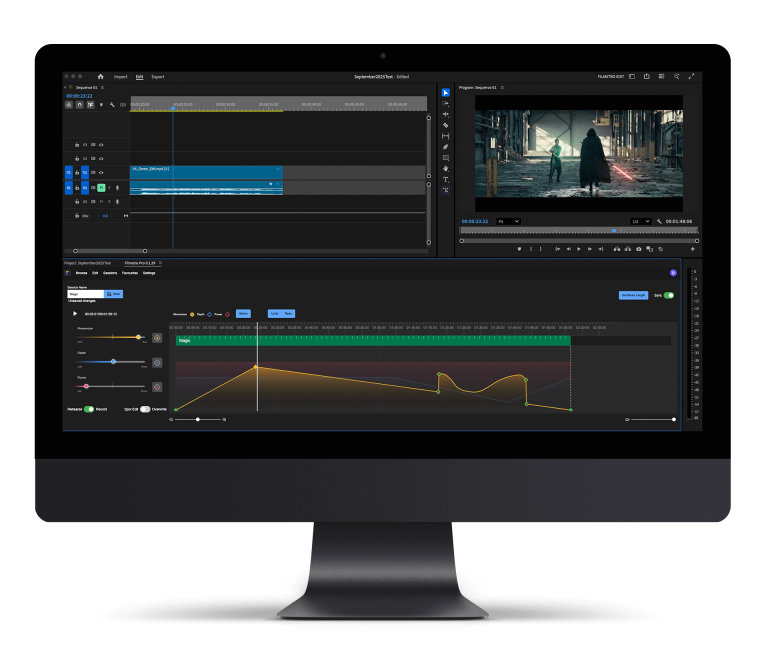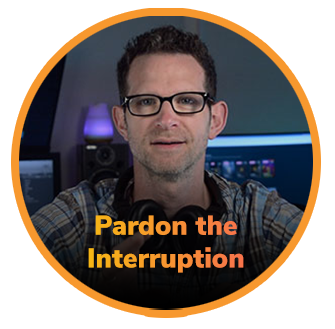The film and television industries have been privy to numerous changes and technological innovations, particularly in recent years. One relatively new concept is gaining traction and opening plenty of doors that, until now, were believed to be closed; we are talking about virtual video production.
Virtual production is a filmmaking method that combines virtual and physical environments, presenting a plethora of immersive new storytelling opportunities for filmmakers and content creators. Most people are familiar with using green screens in television and film, and how it is relatively straightforward for editors to add visual effects and animations in post-production.
However, virtual production is far more revolutionary for the film landscape of today and can offer filmmaking specialists and enthusiasts the chance to elevate their content to new levels while streamlining workflows.
In this short guide, we’ll explore the background, benefits, use cases, and future considerations of this exciting new production method.
The rise of virtual video production
Virtual production has its roots in precursor technologies like rear projection, chroma-keying and motion capture. Notable Hollywood blockbusters like the Lord of the Rings trilogy, The Batman, Rogue One: A Star Wars Story, and Oblivion use a hybrid of these technologies and techniques, along with innovative new VFX (visual effects), high-resolution laser projectors and screens.
In the last few years, we have seen the emergence of ‘live-action’ remakes of Disney animated classics like The Lion King, in which the entirety of the films were shot digitally using virtual cameras. Disney later rolled this technique out into its original series The Mandalorian, incorporating LED walls.
Hollywood has been notorious for ‘changing the game’, with productions in its pipeline demonstrating unique uses of advanced computer graphics, camera tracking, and virtual environments. There was once a time when green screens were considered groundbreaking whereas nowadays, they offer limited filmmaking potential when compared with enterprise-grade technology and real-time synchronicity of cameras, screens, and effects.
The success of projects like the above generated significant excitement about the prospect of virtual production in the industry. Tech providers like Epic Games and media studios alike accelerated development to tap into its potential.
The benefits of virtual production
There are several reasons why virtual production is gaining traction for established industries like Hollywood, as well as independent filmmakers and content creators alike. Let’s look at some of those advantages at a glance:
- Creative freedom – With virtual production, creators are only limited by their imaginations. Designers can create digital backgrounds and storyboards exactly as they envision them without being burdened by real-world restrictions or obstacles.
- Cost- and time-saving – Location shoots become unnecessary and logistically flexible with the help of virtual production. It reduces the need for on-site shots and action sequences done in real-time, thus reducing the need for reshoots and extensive post-production. This, in turn, helps filmmakers meet deadlines and stick to budgets with greater precision.
- Real-time feedback – Rather than waiting for edits and post-production, creators can see shots play out immediately. This means they can make adjustments on the fly, enabling faster iteration, while teams can collaborate openly and with minimal bottlenecks.
- Efficiency – Virtual production condenses production timelines by integrating parts of the pipeline. It eliminates the need for travelling, hospitality, and catering for casts and crews, with environmental factors like weather and lighting considered non-factors. Shooting and set building happen in parallel, while post-production compositing is minimised, thus leading to greater cost savings.
- Immersive environments – LED walls surrounding actors immerse them into scenes by displaying interactive camera-tracked imagery. This inspires more authentic performances compared to traditional green screens.
Digital transformation considerations
As with any emerging technology, careful consideration must be given to its integration and evolution. As virtual production grows in availability, pipelines in film and television production will become increasingly more digitised, and vigilant human oversight will remain critical.
Filmmakers and creators need to be mindful of the legal considerations around digital likenesses and their usage, which may require regulatory input from industry standards. Content creators should pay close attention to emerging legislation and regulations that stipulate how third-party, digitised content must be lawful and not impose privacy concerns.
On the same topic, as incumbent technology becomes more seamlessly intertwined, virtual films and content must be produced with the utmost integrity to security. Unpatched or vulnerable systems can be exploited if networks and connections are not encrypted or if shortcuts are taken. Data breaches can allow unauthorised access to a digital infrastructure where assets or information can then be stolen or distributed illegally.
If virtual filmmakers want to prevent leaks or confidential information from ending up in the public eye, then they must ensure they are following security recommendations. There is a need to enforce multi-factor authentication (MFA) with consistent monitoring and establish disaster recovery plans together with incident response solutions, to safeguard data and content once produced.
The future of virtual video production
Despite some security considerations of the broader technology, virtual filmmaking has a promising future. From blockbuster films to advertisements and broadcasts, its applications today are practically limitless considering how frequently consumers absorb digital media.
Virtual production techniques can lead to the creation of realistic environments and settings with razor-sharp precision, but technology isn’t exclusively reserved for the world of filmmaking. Virtual production can empower advertisers and marketers to put products in immersive, ‘otherworldly’ environments that capture their audiences’ attention, making campaigns more creatively stimulating and memorable. Live events can also be taken up a notch with virtual effects and augmented reality, bringing attendees even closer to performances and sports games than ever before.
As tools and workflows mature, virtual video production is likely to experience continued investment and evolution.
At present, virtual production technology is high-end and, for many independent creators, seemingly out of reach. The coming years should see more inclusivity and ready access to real-time tools that empower smaller productions to harness the technology. Once this tech falls into more independent creators’ hands, content libraries will grow, providing more creators with instantly accessible elements to create virtual worlds with ease. This collective content will speed up production efficiency and creativity.
Virtual production represents a seismic shift in the creative process and pipelines for directors, production designers, cinematographers, and other content creators involved in the curation and distribution of quality digital content.
As tools advance, consideration has to be given to the hardworking professionals in this space. As more production companies begin to leverage virtual production, they must strike a balance between letting the tech run rampant and supervising it for the benefit of production. Fundamentally, the tech can transform filmmaking and entertainment, but the real test will be how creators harness it as it evolves even further.
Thank you for reading!
We hope you enjoyed this article and don’t miss out on any of our other blogs!
Sign up to Filmstro and follow us on Twitter, Facebook and subscribe to our Youtube channel. You can also check out some of our amazing royalty-free music today by clicking here.









